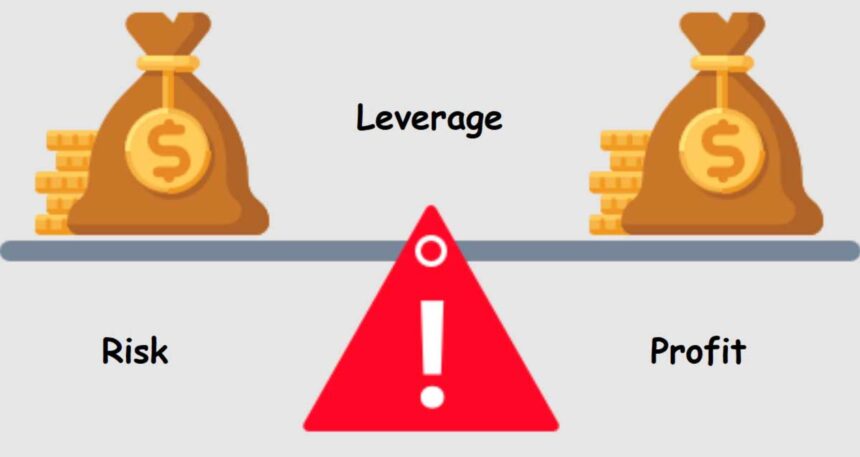Forex trading, also known as foreign exchange trading, is a popular way for individuals to invest in the global currency markets. One key concept that traders must understand is leverage. Leverage can amplify both gains and losses in forex trading, making it a powerful tool that can significantly impact your trading results. In this article, we will explore the basics of leverage in forex trading, how it can amplify gains and losses, the risks and rewards of using leverage, understanding margin calls, tips for using leverage wisely, and regulations and limits on leverage in forex trading.
The Basics of Leverage in Forex Trading
Leverage in forex trading allows traders to control larger positions with a smaller amount of capital. It essentially enables traders to borrow money from their broker to open larger positions than they would be able to with their own capital alone. For example, with a leverage of 1:100, a trader can control a position worth $100,000 with only $1,000 of their own capital. Leverage ratios can vary depending on the broker and the currency pair being traded, with common ratios ranging from 1:50 to 1:500.
Leverage is expressed as a ratio, such as 1:50 or 1:100, indicating the amount of capital the trader is required to put up in relation to the size of the position. The higher the leverage ratio, the smaller the margin required to open a position. While leverage can magnify potential profits, it also increases the risk of significant losses. It is important for traders to understand how leverage works and its implications before using it in their trading strategies.
How Leverage Can Amplify Gains and Losses
Leverage can amplify both gains and losses in forex trading. When a trade moves in the trader’s favor, leverage can magnify the profits earned on the trade. For example, a 1% gain on a $100,000 position with 1:100 leverage would result in a $1,000 profit, compared to a $100 profit without leverage. However, if the trade moves against the trader, losses can also be amplified. It is crucial for traders to manage their risk effectively when using leverage to avoid significant losses.
Comparison Table: Leverage Amplification
| Leverage Ratio | Trade Gain | Amplified Gain |
|---|---|---|
| 1:50 | 1% | 50% |
| 1:100 | 1% | 100% |
| 1:500 | 1% | 500% |
The Risks and Rewards of Using Leverage
Using leverage in forex trading comes with both risks and rewards. The potential for higher returns is a key attraction for many traders, as leverage allows them to control larger positions and potentially earn larger profits. However, the flip side is that leverage also increases the risk of significant losses. Traders must be mindful of the risks involved and have a solid risk management strategy in place to protect their capital.

Understanding Margin Calls in Forex
Margin calls are a key aspect of trading with leverage in forex. When a trader’s account falls below the required margin level due to losses on leveraged positions, the broker may issue a margin call. This requires the trader to deposit additional funds into their account to meet the margin requirements or close out some of their positions. Failure to meet a margin call can lead to the broker liquidating the trader’s positions to cover the losses.
Tips for Using Leverage Wisely in Forex
- Start with a demo account to practice trading with leverage before using real money.
- Use stop-loss orders to limit potential losses on leveraged positions.
- Only trade with an amount of leverage that you are comfortable with and can afford to lose.
Regulations and Limits on Leverage in Forex Trading
Regulations on leverage in forex trading vary by country and jurisdiction. Some regulators have imposed limits on the maximum leverage that brokers can offer to retail traders to protect them from excessive risk. For example, in the European Union, brokers are limited to offering leverage of up to 1:30 for major currency pairs. It is important for traders to be aware of the regulatory environment in their region and choose a broker that complies with relevant regulations.
In conclusion, leverage is a powerful tool in forex trading that can magnify both gains and losses. While leverage can increase the potential for higher returns, it also comes with increased risk. Traders must understand how leverage works, manage their risk effectively, and comply with regulatory requirements when using leverage in their trading strategies. By using leverage wisely and implementing sound risk management practices, traders can harness the benefits of leverage while minimizing the potential downsides.

Starting with a demo account is a smart idea before trading with real money using leverage. Great tip!
I didn’t know about margin calls before reading this article. It’s important to be aware of them in forex trading.
The comparison table really helps to understand how leverage amplifies gains and losses. Very informative!
“Leverage ratios like 1:50 or 1:100 are common, but you need to use them wisely to avoid big losses.”
Leverage sounds like a double-edged sword in forex trading. It’s interesting how it can both increase profits and risks.
The regulations on leverage vary a lot by region, so it’s crucial to understand them before trading.
I learned that leverage allows traders to control larger positions with less money. This is quite fascinating!